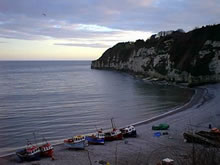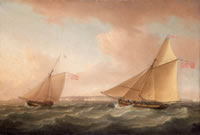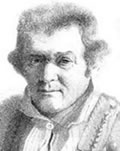The Snells - and Beer
Beer, the Spaniards, and the Smugglers
 Beer is interesting. A small fishing village near Axmouth - referred to as Beare in the 1697 Act which granted English lace makers protection against foreign competition.
Beer is interesting. A small fishing village near Axmouth - referred to as Beare in the 1697 Act which granted English lace makers protection against foreign competition.
In the 17th century, three-quarters of the population of Beer died of bubonic plague.
Residents of Beer are sometimes referred to as Spaniards by neighbouring villagers. Tradition has it that a Spanish vessel (possibly from the Spanish Armada) was wrecked off the shore and that the crew settled in the thinly populated post-plague village.
In the late 18th century and early 19th century, smuggling provided many citizens of Beer with an income on both sides of the law. According to George Pulman in 'The Book of the Axe', published in 1875, "In former days, when the coastguard was inefficient and the exciseman lax, the Beer men were the very kings of smugglers."
Beer fishermen had always had a fine reputation for their ability to handle and sail boats. With this ability and the ideal geographical location for landing contraband and transportation to remote farms and houses, smuggling became an alternative "trade" for some of the fishermen. By 1750, the area was so notorious that the local revenue officers were reinforced by dragoons posted in Beer, Branscombe and Seaton.
 Not all of the inhabitants of Beer were smugglers, some worked for the authorities to catch the smugglers. This could prove complicated and sometime coastguards were bribed to turn a blind eye. The honest citizens could also make money from smuggling by informing on the smugglers or by retrieving the contraband, being rewarded once it was handed over to the authorities and sold.
Not all of the inhabitants of Beer were smugglers, some worked for the authorities to catch the smugglers. This could prove complicated and sometime coastguards were bribed to turn a blind eye. The honest citizens could also make money from smuggling by informing on the smugglers or by retrieving the contraband, being rewarded once it was handed over to the authorities and sold.
The most famous smuggler was Jack Rattenbury. He was born in Beer in 1778 to a Beer woman, Anne Newton who was married to a Honiton man, John Rattenbury. After thirty years at sea as a fisherman, pilot, seaman and smuggler he wrote about his life in a book, 'Memoirs of a Smuggler', which was published in 1837.
The Snells
Our Snell story begins with John Snell, who was born, lived and died in Beer. He was an 'agricultural labourer' - sometimes a lime burner. Seems a funny thing to be in a fishing/smuggling village. John married local girl Louisa Cawley on 28 March 1837. Their son Henry Snell was born in 1843 (what took them so long?), after which they popped out another 8 kids over the next 18 years - maybe there were more, but these ones lasted long enough to be counted in the censuses: Louisa, Mary Ann, Thomas, Edward, Cora Ann, Edmund, William R, and George. George was born on 12 May 1860.
So how was it for George the youngest? In the 1871 census he's 10 years old, still at home but with mum and dad, but also sharing with his elder brother Thomas and his wife Marianne - and their baby Elizabeth, one year old. Who knows.
Whatever, it rather looks as though 18-year-old George ran off with local girl Emily Lowden to London, where they were married in West Ham in 1879. Their son Herbert George Snell was born in the Spring of 1880 in East Ham. A year after that, the 1881 census finds them in Newhaven, Sussex with 11 month old Herbert - George's occupation is given as 'labourer'.
For more of the George Snell story, go to The Snells, London
